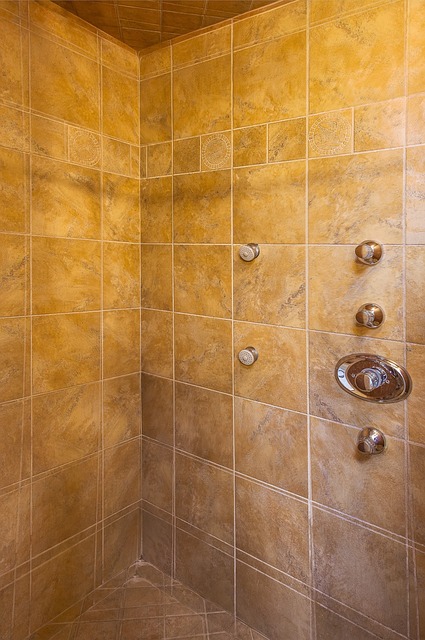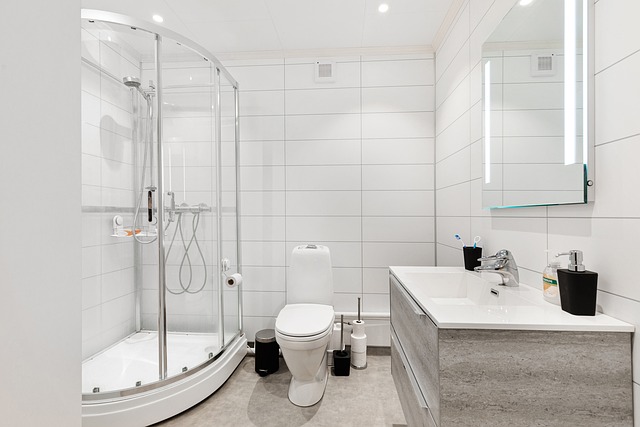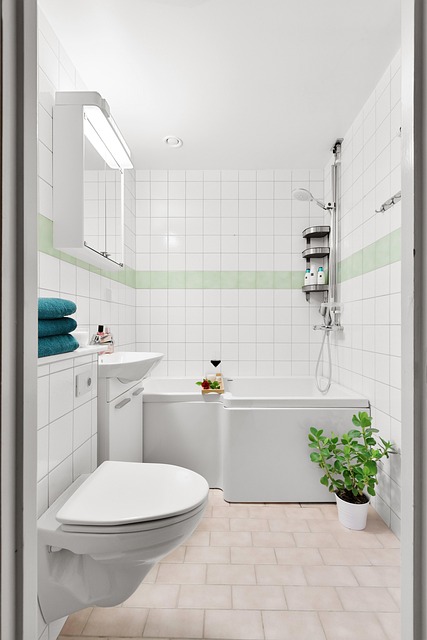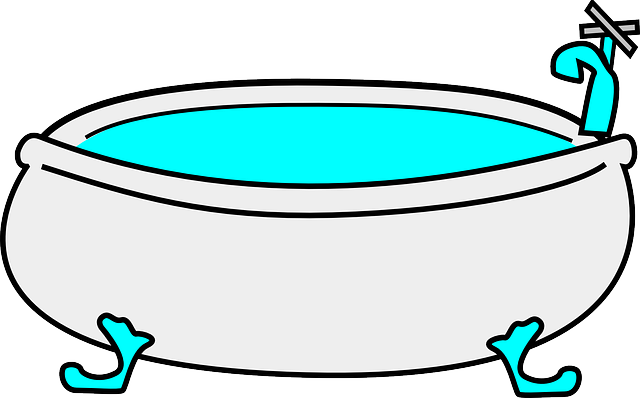This text offers comprehensive guidance on addressing and preventing bathroom mold, especially in showers. It attributes mold growth primarily to excess moisture from inadequate ventilation in humid bathrooms. Solutions include installing exhaust fans, using mold-resistant paint and grout, practicing good hygiene, regularly inspecting for mold, and promptly treating it. Effective prevention strategies also involve proper ventilation through high-quality fans, regular cleaning, removing standing water, and choosing mold-resistant paint. Selecting the right paint, focusing on grouts, and leveraging natural remedies like vinegar are key to long-term mold control.
Tired of dealing with unsightly and hazardous bathroom mold? This comprehensive guide offers effective solutions for preventing mold on your ceilings and beyond. We break down the root causes of shower mold problems and provide a step-by-step plan for bathroom mold removal. Learn about best practices for ventilation, top-rated mold-resistant paint options, and crucial cleaning steps like tackling grout to keep your space fresh and healthy. Say goodbye to moldy surprises!
- Understanding Bathroom Mold: Causes and Common Areas
- Step-by-Step Guide to Preventing Mold on Ceilings
- Best Practices for Ventilation in the Bathroom
- Top Mold-Resistant Paint Options for Your Bathroom
- Cleaning Grout: A Key Step in Mold Prevention
- Additional Tips for Maintaining a Mold-Free Bathroom
Understanding Bathroom Mold: Causes and Common Areas

Bathroom mold removal is a common concern for many homeowners, especially when it comes to shower mold problems. Understanding the causes and common areas of bathroom mold growth is the first step in preventing and addressing this issue effectively.
The primary cause of bathroom mold is excess moisture. Bathrooms are naturally humid environments due to activities like showering, bathing, and steam from hot water pipes. Inadequate ventilation exacerbates this, leading to water vapor buildup, which over time can foster mold growth. Common areas affected include ceiling tiles, grout lines, and walls around showers and sinks. Proper bathroom ventilation is crucial for dissipating moisture; installing exhaust fans or ensuring proper window openings can significantly reduce the risk of mold formation. Additionally, using mold-resistant bathroom paint and treating grout with anti-mold solutions during installation can provide an extra layer of protection against this persistent problem.
Step-by-Step Guide to Preventing Mold on Ceilings

To prevent mold on your bathroom ceiling, follow these easy steps. First, assess and identify potential sources of moisture. Common culprits include leaky pipes, inadequate ventilation, and high humidity levels. Address any leaks immediately and ensure proper ventilation in your shower or bathtub area. Install a fan that can expel steam during showers and consider adding an exhaust vent if none exists.
Next, choose mold-resistant materials for your bathroom. Opt for mold-resistant paint designed specifically for bathrooms to create a protective barrier against moisture. When tiling, use grout that is resistant to mold and clean it regularly with a mixture of water and bleach to prevent buildup. Additionally, maintain good hygiene practices by promptly cleaning up any water spills and ensuring the area stays dry after each use. Regularly inspect your ceiling for any signs of mold and address them promptly using suitable bathroom mold removal products.
Best Practices for Ventilation in the Bathroom

Maintaining a dry and well-ventilated bathroom is key to preventing mold growth on ceilings and other surfaces. The best practices for ventilation involve ensuring adequate air circulation throughout the space, especially around the shower area, where moisture tends to accumulate. Install high-quality exhaust fans that are designed to remove humid air effectively. These fans should be operational during and after showering to expel excess moisture from the bathroom. Additionally, consider opening windows or using an additional portable fan to enhance cross-ventilation when taking a shower, as this can significantly reduce moisture levels in the room.
Regular cleaning and maintenance are also crucial. Use mold-resistant paint on ceilings and walls to create a protective barrier against moisture intrusion. Keep grout lines clean and sealed to prevent water from seeping into tiny cracks, which can foster mold growth. After each shower, wipe down surfaces with a damp cloth to remove any residual moisture. Address any leaks promptly, as standing water is a primary catalyst for bathroom mold removal.
Top Mold-Resistant Paint Options for Your Bathroom

When it comes to preventing bathroom mold, choosing the right paint is a strong first step. Opting for mold-resistant paint specifically designed for high-humidity areas like bathrooms can create a protective barrier against unsightly and hazardous mold growth. Look for paints with properties that inhibit mold growth, such as those containing anti-microbial agents or silicon-based additives. These innovative formulas not only deter mold but also make cleaning easier in the future, as any surface mildew can be wiped away with a simple solution of water and mild detergent.
Among the top mold-resistant paint options for your bathroom are low-VOC (Volatile Organic Compound) paints known for their superior durability and air quality. These paints adhere well to surfaces, filling in pores and cracks that could otherwise harbor moisture – a prime condition for mold growth. Additionally, ensure proper ventilation during painting and after application by using exhaust fans or opening windows to disperse VOCs and maintain optimal humidity levels, further preventing shower mold problems and other bathroom mold removal challenges. Remember, cleaning mold from grout is a separate task but incorporating these paint choices into your bathroom remodeling or updating plan can significantly reduce the risk of future mold-related headaches.
Cleaning Grout: A Key Step in Mold Prevention

Keeping your bathroom free from mold requires a proactive approach to moisture control and regular cleaning. One often-overlooked aspect of this is cleaning the grout between tiles, especially in areas prone to shower mist and condensation like bathrooms. Grout acts as a porous barrier, trapping moisture and creating an ideal environment for mold growth. Regularly cleaning and sealing grout can significantly reduce these risks.
Start by removing any visible mold with a solution of water and mild detergent. Then, use a grout cleaner or a mixture of baking soda and vinegar to tackle the stubborn stains and kill any hidden mold spores. Once cleaned, apply a water-repellent grout sealer to create a protective barrier against moisture. This is a crucial step in preventing shower mold problems and maintaining a healthy, mold-resistant bathroom environment. Additionally, ensuring proper ventilation in your bathroom, using mold-resistant paint, and promptly addressing leaks can further contribute to a mold-free space.
Additional Tips for Maintaining a Mold-Free Bathroom

To maintain a mold-free bathroom, consider implementing additional strategies beyond regular cleaning. First, invest in best bathroom ventilation for mold; proper circulation helps reduce humidity levels, creating an inhospitable environment for mold growth. Ensure your exhaust fan is functional and consider using dehumidifiers to further control moisture.
When it comes to how to prevent bathroom mold, the choice of paint can make a difference. Opt for mold resistant bathroom paint which is designed to inhibit mold growth. Additionally, regularly inspect and clean shower mold problems immediately. Use a mixture of water and vinegar or specialized cleaning solutions to scrub away existing mold, then apply preventive coatings to grout to address cleaning mold from grout.
